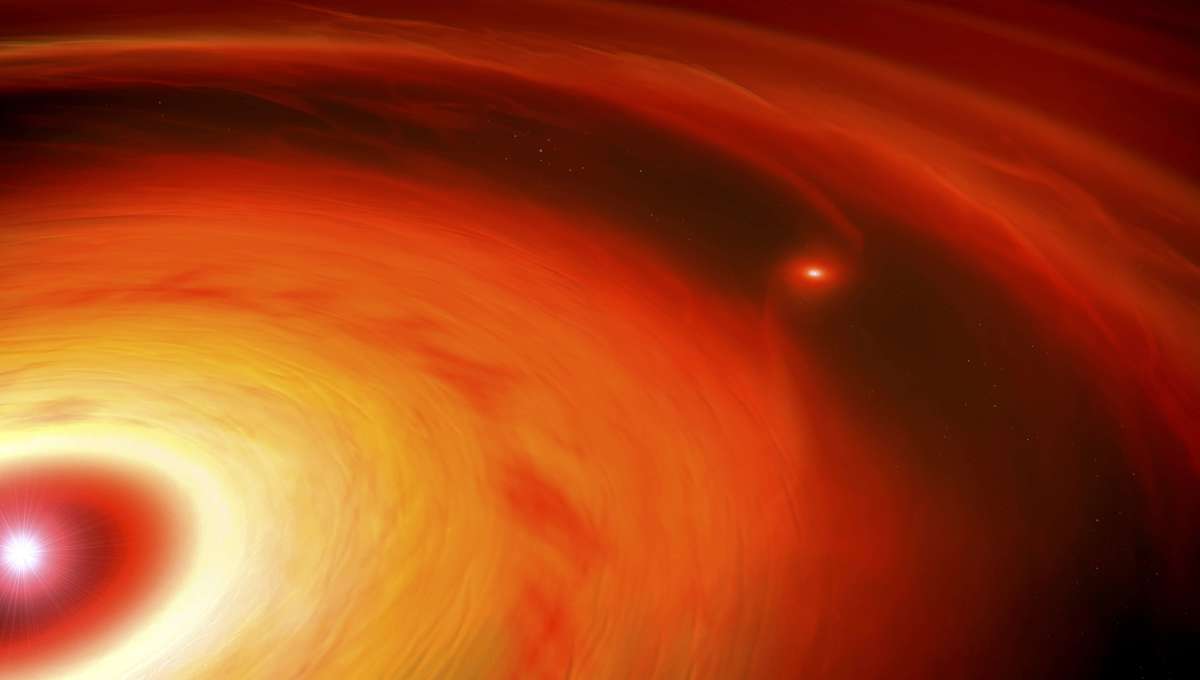Raw ingredients for life abundant in swirling disks around newly formed planets
[ad_1]
About 4 billion years ago, the raw ingredients of life combined in the right way, through a process as yet unknown, and life emerged here on Earth. To date, we have not been able to confirm the existence of life elsewhere in the universe, but new research suggests that the ingredients of life may be more common than we previously assumed.
Combining them in the right way is another matter entirely, but astronomers using a telescope known as the Atacama Large Millimeter / submillimeter array (ALMA) in Chile have determined that the basic elements may be common in planetary nurseries.
Dr John Ilee of the School of Physics and Astronomy at the University of Leeds, along with a team of colleagues from eight different countries, used the telescope to study five protoplanetary disks. These disks are swirling masses of dust and gas, 1 to 10 million years old, accreting in planetary systems.
Planetary disks were already known to contain organic molecules, but the prevalence of complex organic molecules (COMs) of the type needed to build things like amino acids has been difficult to determine. This is largely due to the complexity of these molecules. Typically, larger structures are easier to find in space, but “large” is relative when talking about molecules floating in clouds light years away.
“We’ve known that disks have harbored these types of molecules for a few years,†Ilee told SYFY WIRE. “The surprising result of our analysis was how well we were able to detect in the discs, up to 100 times more than we expected from our best models.”
In the case of molecules, bigger is not always better. The chemical composition of distant structures is determined by spectroscopy – the process of observing the wavelengths of radiated light emitted by the object. Each chemical compound from the hydrogen emits a specific spectral pattern, like a fingerprint, which allows observers to determine the composition from a distance.
Larger molecules, with more individual atoms chained together, have more complex emission patterns. An unfortunate result of this is that the emissions are weaker and more difficult to detect. This means that while complex organic molecules might have been waiting for us in the far reaches of space, they had to wait until we developed telescopes and observational methods sensitive enough so that we could find them.
The measurement of the spectral lines of moving objects is particularly difficult because of the Doppler shift. As objects move, their light (whether visible or not) is shifted to either end of the spectrum, depending on the direction of their movement. When an object moves away from an observer, its light is shifted red. When it moves towards an observer, it is shifted towards blue.
Objects in orbit, such as protoplanets that spin in an accretion disk, can move toward Earth observers at certain times and away from them at others, depending on the viewing angle. This change in frequency disturbs spectral measurements and must be taken into account. The team used software to plug in the known geometry and rotation of the discs and to correct for rotational Doppler shift, resulting in a single spectrum.
This method, and the sensitivity of the equipment, allowed the team not only to confirm the existence of complex organic molecules in protoplanetary disks, but also to identify their approximate locations. Among the molecules they were looking for, they found them successfully in four of the five disks studied, indicating that COMs are most likely prevalent in planetary nurseries.
“We are certainly not suggesting that something like alien life has been detected, but rather some of the raw ingredients of life as we know it here on Earth. A key component of these molecules is the carbon-nitrogen bond. This has been shown to be important in the synthesis of molecules such as sugars, amino acids, and the bases of RNA. The molecules we have observed therefore represent the most complex (yet) detected in protoplanetary disks with this binding and demonstrate that these steps of molecular complexity can be constructed close to forming planets, â€said Ilee.
The aberrant system, IM Lup, did not show strong indications of complex organic molecules. This could be explained by his relatively young age. Of the five discs observed, IM Lup is the youngest, with an estimated age of over 1.3 million years. If these complex molecules form in the disc during accretion, IM Lup may simply not have had time to form them. Other factors, such as the size and density of the disc, could also mask complex molecules if they exist. Understanding which factors contribute to the apparent lack of measured COM will require more robust models.
The discoveries are good news for life elsewhere in the universe. It is clear that planetary chemistry promotes the formation of complex organic molecules of a type that at least once resulted in the emergence of life. Given the vastness of the universe, it seems unlikely that they will not be found in the correct distribution and configuration for life elsewhere.
[ad_2]

